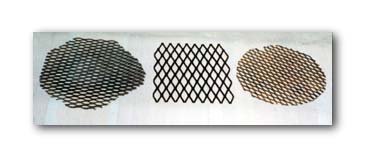|
A guide to self reliant living |
|||||
|
6. Kerosene heaters and cookers
12.
Electrical; generators
Miles Stair's SURVIVAL
Miles Stair's
SURVIVAL |
TRIVETS FOR WOOD STOVES
Be they cast iron stoves, steel wood heating stoves, fireplace inserts with a cooking surface, or old fashioned wood cooking ranges, all will generate intense heat on the cooking surface. A cast iron pot or pan placed directly on the surface of the stove may well produce enough heat to burn the contents intended for consumption -- really bad news. Trivets were the traditional answer. They elevated the pot or pan above the cooking surface, so air could circulate and thus lower the temperature of the pot or pan to more manageable levels, as in simmering a stew. But trivets are non adjustable, generally small, and now quite expensive. The alternative answer is to use pieces of steel expanded metal, cut to whatever size you desire. The expanded metal itself is usually available for free from the scrap yards of metal dealers, in odd shaped pieces left over from various projects. I cut mine circular, using either a hack saw (the hard way) or a metal cutting blade in a jig saw, then deburr with a grinder. The size depends upon the alternate use: I cut them to fit inside stock pots, so they will elevate a pot above the bottom, allow water to circulate, and thus make a stock pot into a giant double boiler. When not used in the stock pot, they are can be used on top of a wood or kerosene heater just like a trivet. And the expanded metal offers the additional benefit of adjustability -- you can stack up two or three pieces to more finely regulate the heat on the pot or pan sitting on them. ------------------
| 1.
Food | 2. Manna
Meals | 3.
Water | 4.
Sanitation | 5.
Medical, health |
| 6. Kerosene heaters and cookers | 7. Lighting | 8. Wood cooking and heating | | 9. Communications | 10. Essential Tools | 11. Home built items | | 12. Electrical; generators and power | 13. War preparedness | 14. Gardening |
|
|
|||


